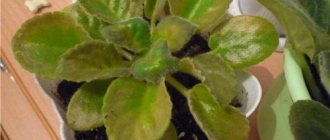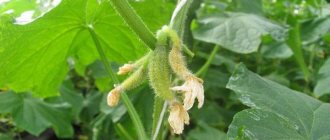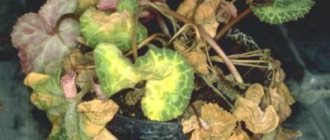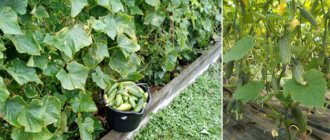We all love to feast on sweet, incredibly tasty and aromatic grapes. We drink juices made from it with pleasure, and exquisite wines do not leave lovers of this drink indifferent. In addition to winegrowers, gardeners also grow crops on their plots. In general, the process of growing grapes is not too complicated, but there are some nuances here. For example, berries and even whole clusters often dry out on the vine, which causes concern among both amateur gardeners and experienced winegrowers. In some cases, it happens that most of the grape clusters dry out completely. Today we will try to figure out why this happens and how it can be prevented.
Mildew
The well-known disease of grapes, mildew, very often causes drying of the brushes. Mildew causes especially great damage to this plant during flowering; individual berries are the first to dry out, and just before ripening, the grape clusters are up to half full. This happens because the mildew fungus completely blocks the access of nutrients to the bunch. Please note: the photo below shows a bunch of grapes damaged by this fungus.
In order to prevent damage to plants, the entire vineyard should be treated with the preparations “Kurzat”, “Ridomil”, “Ordan”, “Polichom”. The treatment must be carried out three times during the growing season - before flowering, after it and when the berries reach the size of peas.
Infectious diseases
- Fungal diseases of grapes.
- Mildew (downy mildew).
- Oidium (ashtray, powdery mildew).
- Alternaria blight (olive blotch).
- Anthracnose (spotted, bird's eye).
- Gray (bothrinosis).
- Aspergillus rot.
- White rot (white rot, “hail disease”).
- Black rot (black mouth).
- Pink moldy rot.
- Rubella.
- Verticillium (wilt).
- Apoplexy.
- Armillariasis.
- Root rot.
- Diplodiasis.
- Penicillosis.
- Fusarium.
- Moniliosis.
- Cercosporiosis.
- Black spot (escoriosis, phomopsis, dry sleeve).
- Helminthosporiosis
- Septoria (melaniasis).
- Esca (trunk disease).
- Eutypiosis (withered sleeves, death of sleeves).
- Bacterial lesions of grapes.
- Bacterial spotting.
- Acid (acetic) rot.
- Bacterial necrosis (bacterial wilt, Oleuron's disease)
- Bacteriosis of berries.
- Pierce's disease.
- Bacterial cancer.
- Viral diseases of grapes.
- Short knot (infectious degeneration).
- Yellow mosaic (chlorosis).
- Bordering of veins.
- White mosaic (panashure, variegated)
- Interveinal chlorosis.
- Golden yellowing.
- Flattening of the trunk.
- Necrosis of shoots.
- Rezuha mosaic virus, or arabis mosaic virus.
- Asteroid (star) mosaic.
- Grape wood furrow virus.
- Red leaf virus.
- Leaf marbling virus.
- Vein necrosis virus.
- Leaf curl virus (golden yellowing).
Gray rot
Gray mold is considered one of the most common fungal diseases. It is found in almost any region where vineyards grow. Infection of plants occurs in the spring, the main reason for this is the fungus Botrytis cinerea. Its appearance is favored by a warm, humid environment. First, the disease affects the leaves and cuttings; a fluffy gray coating appears on them, which crumbles when shaken. It then spreads to healthy parts of the vine. It causes the greatest harm to grape fruits, which at this time begin to ripen or are already ripe. When infected with a fungus, the berries turn brown and quickly rot. It is strictly forbidden to eat such fruits.
The methods of combating this disease are simple: it is necessary to trim the bunches of grapes and other parts of the plant that have been affected by the fungus, after which they must be burned. Currently, you can purchase seedlings that have lasting immunity to this disease.
Dryness of grapes
This vine disease is caused by the fungus Eutypa lata; it is most often common in those wine-growing regions where the climate in winter is not too mild. In those seasons characterized by high rainfall, it causes the greatest damage.
This pathogenic fungus penetrates the tissues of not only grapes, but also many other fruit and horticultural crops, all this complicates the fight against the manifestations of the disease and its further spread. Eutypa lata infects not only the shoots, but also the bunches of grapes. Most often, the disease affects mature grape bushes that are older than 8 years. Symptoms of dry-sleeve become most obvious already in early summer, when the plant produces growth of 20-25 cm in length.
Signs of the disease are that leaves and shoots begin to lag in growth, their size and color are significantly different from healthy ones. First, the leaves dry out on the vine, and then the affected shoots and brushes either dry out or completely stop growing and remain that way until the end of the season.
Berry temperature
Berry temperature: In 1990, Lang and Düring found that high temperature causes a decrease in grape skin strength, slight enlargement of the berries and hardening of the skin surface, which promotes cracking (Lang and Düring 1990). High temperature weakens the strength of the berry skin and also increases the pressure inside the berry.
The rate at which pressure develops inside the berry is an important determinant of cracking. If the water content of the berries is high and the temperature of the berries rises rapidly, cracking may occur. Shaded berries may soften less quickly and be less susceptible to cracking.
Earlier studies show that temperature plays a very important role in the rate at which berries crack. Analyzing the studies conducted on this topic, it can be summarized that there is a linear increase in cracks with increasing temperature from 10 to 40 °C. Of course, temperature also affects many other factors, such as the permeability of cell walls and biochemical processes in cells, etc.
It is necessary to understand the importance of the effect of temperature on berry cracking if we want to find specific measures to control berry cracking, because the temperature is usually higher inside than outside. Thus, when cultivating tomatoes in a greenhouse, one of the main problems faced by growers is cuticle cracking (CC), called skin browning, shrinkage cracking, hairline cracks and cuticle spots.
When cuticle cracking increases with increasing light levels, it may be associated with increased air and fruit temperatures due to exposure of tomato fruit to direct sunlight, resulting in increased fruit temperatures (Cockshull et al., 1992). Also, Corey and Tan (1990) recommended that as fruit temperature increases, gas pressure inside the fruit should be increased, which can lead to an increase in fruit volume and, as a result, stretching of the fruit skin.
However, the gas pressure inside the fruit is very low (Almeida and Huber 2001), and possible variations are unlikely to cause the volume changes that may be associated with cracking and CC. The most important climatic factor influencing the strength and durability of the conducting system, and, consequently, the division of photosynthetic assimilate between plant organs, is temperature.
Oidium (false sunburn)
This disease is often confused with sunburn. It causes drying of the berries and grape clusters. What signs appear on the vine with oidium? A slightly noticeable white-gray coating appears on the grapes, which looks like a tan from the sun; soon the berries burst and dry out. When a vineyard is affected by oidium, it is immediately treated with colloidal sulfur, this is done before the harvest begins.
Buffalo leafhopper
This insect is a common cause of grape bunches drying out. It lives and reproduces directly under the bush. Produces offspring once per summer season. The larvae, after turning into adults, rise from the grass onto the vine and cause irreparable damage. The leafhopper damages the shoots and combs of the plant, after which the vine cluster disappears. To prevent and control this insect, the vine is treated twice with “Benzophosphate” and all grass under the bush is destroyed. It is recommended to plant onions or garlic in this place; it is believed that they will repel the pest.
Pests
In addition to diseases, almost all insects that feed on their juice can have a negative impact. In addition to sucking out nutrients, they also cause additional damage.
Slobbers leave the products of their vital activity on the leaves in the form of a foaming mass. Because of it, biological processes are blocked. This leads to the death of greenery.
The spider mite entangles the shoots with a dense mesh of thin threads. Because of this, the plant gradually dies.
Aphids can settle on the back side of the leaf. When larvae penetrate plant tissues, they become deformed, twisted, and dry out. Also, this insect can settle on the roots, which over time will lead to cracks and rotting of the root system. In both cases, this threatens the death of the bush.
The marbled beetle is not dangerous at first when settling. But over time it destroys seedlings, roots and young shoots.
The leaf roller damages berries, inflorescences, buds and leaves.
Whatever pests you encounter on the plantation, it is easier to fight them than to fight diseases. They can be destroyed using insecticides: Actellik, BI-58, Akarin. If it is not possible to observe the activity of pests, then regular treatments are carried out according to the phases of grape development:
- along the green cone;
- when 5-7 leaves appear;
- 10 days before and after flowering.
A month before harvest, chemical treatments must be stopped and switched to bioinsecticides.
Other reasons
In addition to pests and fungal diseases, there are a number of mechanical causes. Most hybrid varieties have very large and heavy clusters. If the hands become bent, the food supply stops, they dry out and die. To avoid this, the vines should be placed on supports and arches and try to properly load the vineyard.
The reasons for grape bunches drying out include the following:
- insufficient watering;
- incorrect soil composition;
- lack of heat;
- low light.
Preventive measures
It is unlikely that it will be possible to completely avoid grape diseases, but the risks can still be minimized. Try to buy seedlings only in specialized stores. This will prevent illness for a period of 2-3 years.
The grapes need proper and regular care, which includes loosening the soil and timely watering. A prerequisite for growing grapes is the application of fertilizers; organic matter can be successfully used. Don't forget to inspect the vine for insects. If pests are detected, it is very important to quickly treat with special preparations.
How to feed grapes
During the maturation of the hands, completely different feeding is required than during the growth period. Applying foliar fertilizer to the vine in July promotes faster growth and ripening. You can find out more detailed information about fertilizing and plant protection from the video below.
It is very important that the soil where grapes are grown during their ripening period is saturated with nutrients. If you do not fertilize in a timely manner, yields will only decrease with each subsequent year.
Ripening berries
Berry ripening: During ripening, berry cells bounded by intact membranes receive sugar and water from the leaves through the phloem (Somkuwar et al., 2002). Recent studies have shown that many cell membranes in grapes are destroyed at the end of the ripening process. This ultimately leads to the phenomenon of shriveling AD (SAD) and a cessation of sugar absorption as the flow of sugar-rich water into the berries is reduced.
Intact cell membranes are necessary for the process of water absorption by berries during rain and condensation. Through the process of osmosis, intact cell membranes allow water to be absorbed into the berry cells, which increases the likelihood of berry cracking. In the absence of intact membranes, a small amount of water is absorbed by the berries gradually.











